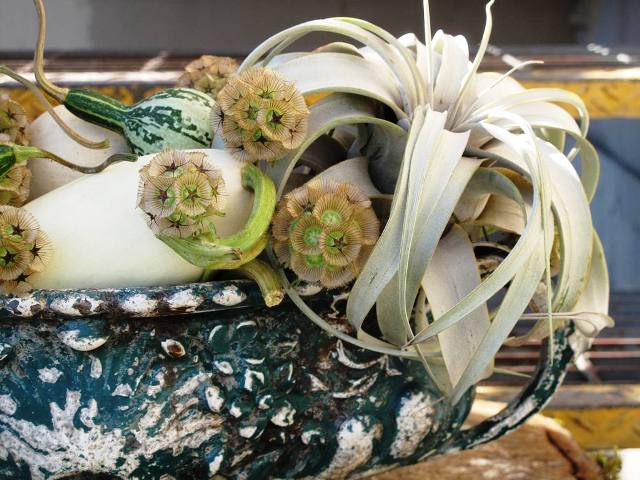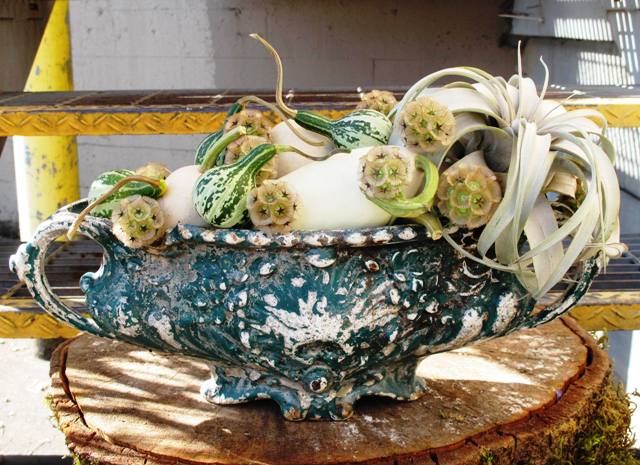SLOW FLOWERS: Week 44
November 3rd, 2013
TARNISHED AND TEXTURED

Super-popular tillandsias, especially this ghostly-white species, makes for an interesting fall centerpiece.
Ingredients:
1 Tillandsia xerographica plant, a gift from Nan Sterman (Tillandsias benefit from a light spritzing of water every week or so)
3 Japanese nest egg gourds, grown by Jello Mold Farm
5 Tennessee dancing gourds, grown by Jello Mold Farm
9 stems Scabiosa stellata ‘Paper Moon’, grown by J. Foss Garden Flowers
Vase:
5½-inch tall x 16-inch long x 6-inch wide, vintage cast-iron planter, found at the Long Beach Flea Market
Design 101
Balance, a design principle: Balance is deeply ingrained in our psyches. In the garden or in a vase, a visuallybalanced design feels pleasing to the eye; when something feels out of balance, it can be agitating to look at. Balance is divided into three categories: Asymmetrical (seen here), in which both halves of a composition may express similar visual weight but are unevenly positioned.
Balance is created by a shift in weight on either side of a central fulcrum. Here, you see that the left side of the arrangement reveals the decorative handle of my urn, while the right side of the arrangement offsets it with the curved leaves of the tillandsia. Symmetrical or bilateral balance means that both sides of a composition are equal, one side essentially mirroring the opposite side. Formal flower arrangements are often symmetrical. Radial balance emanates from a central core, like the rays of a sunflower or spokes of a wheel. This dynamic approach appears in perfectly-domed bridal bouquets or centerpieces designed for 360-degree viewing.









